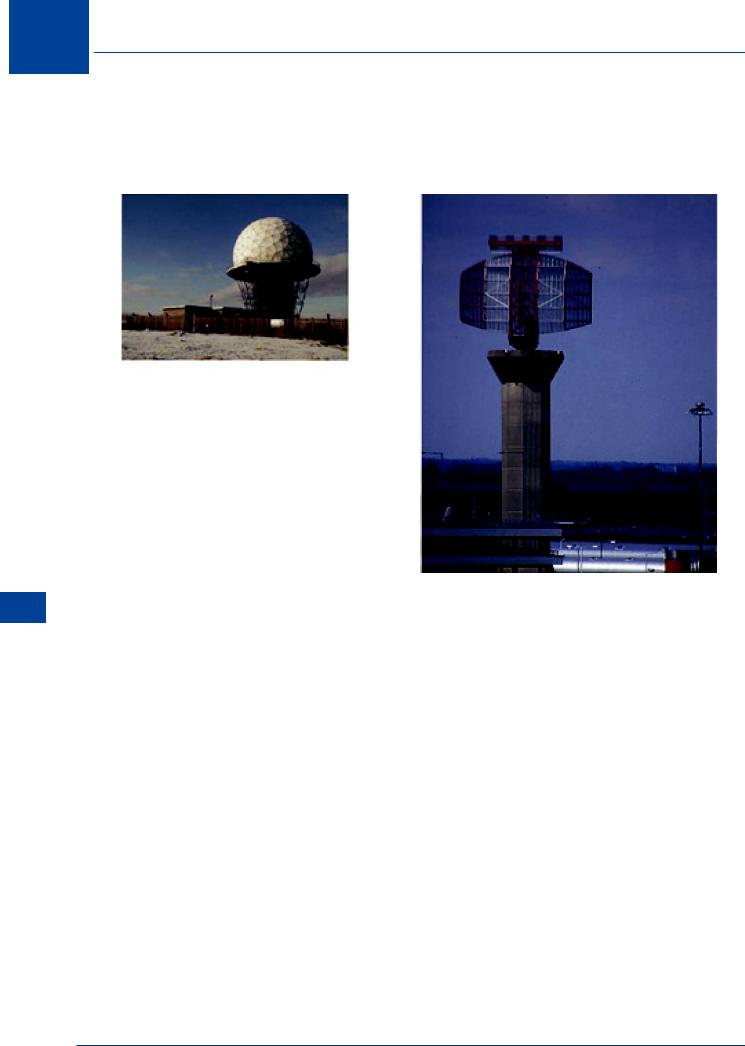
- •Textbook Series
- •Contents
- •1 Definitions
- •Introduction
- •Abbreviations
- •Definitions
- •2 International Agreements and Organizations
- •The Chicago Convention
- •International Law
- •Commercial Considerations
- •Customs and Excise, and Immigration
- •International Obligations of Contracted States
- •Duties of ICAO Member States
- •Status of Annex Components
- •The International Civil Aviation Organization (ICAO)
- •The Organization of ICAO
- •Regional Structure of ICAO
- •Regional Structure and Offices
- •ICAO Publications
- •Other International Agreements
- •The Conventions of Tokyo, the Hague and Montreal
- •The Warsaw Convention
- •The Rome Convention
- •IATA
- •ECAC
- •EASA
- •Eurocontrol
- •World Trade Organization
- •Geneva Convention
- •EU Regulation 261/2004
- •Questions
- •Answers
- •3 Airworthiness of Aircraft
- •Introduction
- •Airworthiness
- •Questions
- •Answers
- •4 Aircraft Nationality and Registration Marks
- •Introduction
- •Nationality and Registration Marks
- •Certification of Registration
- •Aircraft Markings
- •Classification of Aircraft
- •Questions
- •Answers
- •5 Flight Crew Licensing
- •Introduction
- •Definitions
- •General Rules Concerning Licensing
- •Licences and Ratings for Pilots
- •Multi-crew Pilot Licence (MPL)
- •Instrument Rating (Aeroplane) (IR(A))
- •Instructor and Examiner Rating
- •JAR-FCL 3 Medical Requirements
- •Pilot Proficiency
- •EASA Theoretical Knowledge Examinations
- •Questions
- •Answers
- •6 Rules of the Air
- •History
- •Applicability of the Rules of the Air
- •General Rules
- •Visual Flight Rules
- •Instrument Flight Rules
- •Semi-circular Flight Level Rules and RVSM
- •Special VFR
- •Distress and Urgency Signals
- •Restricted, Prohibited or Danger Areas
- •Signals for Aerodrome Traffic
- •Marshalling Signals
- •Flight Deck Signals
- •Questions
- •Answers
- •Instrument Procedures
- •PANS OPS
- •Instrument Departure Procedures
- •Questions
- •Answers
- •8 Approach Procedures
- •Procedure Basics
- •Approach Procedure Design
- •Obstacle Clearance Altitude/Height
- •Operating Minima
- •Descent Gradients
- •Track Reversal and Racetracks
- •Missed Approach Segment and Procedure
- •Published Information
- •RNAV Approach Procedures based on VOR/DME
- •Questions
- •Answers
- •9 Circling Approach
- •Circling Approach
- •Questions
- •Answers
- •10 Holding Procedures
- •Holding Procedures
- •Entry Sectors
- •ATC Considerations
- •Obstacle Clearance
- •Questions
- •Answers
- •11 Altimeter Setting Procedure
- •Altimeter Setting Objectives
- •Transition
- •Phases of Flight
- •Questions
- •Answers
- •12 Parallel or Near-parallel Runway Operation
- •Safety
- •Runway Spacing
- •Questions
- •Answers
- •13 SSR and ACAS
- •Airborne Collision Avoidance System (ACAS)
- •Questions
- •Answers
- •14 Airspace
- •Introduction
- •Control Areas and Zones
- •Classes of Airspace
- •Required Navigation Performance (RNP)
- •Airways and ATS Routes
- •Questions
- •Answers
- •15 Air Traffic Services
- •Introduction
- •Air Traffic Control
- •ATC Clearances
- •Control of Persons and Vehicles at Aerodromes
- •The Flight Information Service
- •The Alerting Service
- •Procedures
- •Questions
- •Answers
- •16 Separation
- •Concept of Separation
- •Vertical Separation
- •Horizontal Separation
- •Radar Separation
- •Procedural Wake Turbulence Separation
- •Radar Wake Turbulence Separation
- •Visual Separation in the Vicinity of Aerodromes
- •Stacking
- •Questions
- •Answers
- •17 Control of Aircraft
- •Procedural ATC
- •Radar Control
- •Radar Identification
- •Radar Service
- •Aerodrome Control
- •Approach Control Service
- •Air Traffic Advisory Service
- •Aircraft Emergencies
- •Questions
- •Answers
- •18 Aeronautical Information Service (AIS)
- •Introduction
- •General
- •The Integrated Aeronautical Information Package
- •The Aeronautical Information Publication (AIP)
- •Notices to Airmen (NOTAM)
- •SNOWTAM
- •ASHTAM
- •Aeronautical Information Circulars (AICs)
- •Pre-flight and Post-flight Information
- •Questions
- •Answers
- •Introduction
- •Aerodrome Reference Code
- •Glossary of Terms
- •Aerodrome Data
- •Runways
- •Taxiways
- •Aprons
- •Questions
- •Answers
- •Requirements
- •Visual Aids for Navigation
- •Runway Markings
- •Taxiway Markings
- •Signs
- •Markers
- •Visual Docking Guidance Systems
- •Questions
- •Answers
- •21 Aerodrome Lighting
- •Aerodrome Lights
- •Approach Lighting Systems
- •Runway Lighting
- •Taxiway Lighting
- •Questions
- •Answers
- •22 Obstacle Marking and Aerodrome Services
- •Introduction
- •Visual Aids for Denoting Obstacles
- •Visual Aids for Denoting Restricted Use Areas
- •Emergency and Other Services
- •Other Aerodrome Services
- •Questions
- •Answers
- •23 Facilitation
- •Entry and Departure of Aircraft
- •Questions
- •Answers
- •24 Search and Rescue
- •Definitions and Abbreviations
- •Establishment and Provision of SAR Service
- •Co-operation between States
- •Operating Procedures
- •Questions
- •Answers
- •25 Security
- •Introduction
- •Objectives
- •Organization
- •Preventative Security Measures
- •Management of Response to Acts of Unlawful Interference
- •Further Security Information
- •Questions
- •Answers
- •26 Aircraft Accident and Incident Investigation
- •Introduction
- •Objective of Investigation
- •Investigations
- •Serious Incidents
- •EU Considerations
- •Questions
- •Answers
- •27 Revision Questions
- •Revision Questions
- •Answers
- •EASA Specimen Examination
- •Answers to Specimen EASA Examination
- •28 Addendum – EASA Part-FCL & Part-MED
- •Chapter Five. Flight Crew Licensing
- •European Aviation Safety Agency (EASA)
- •Licences
- •Ratings
- •Certificates
- •EASA Part-MED
- •29 Index

Chapter
17
Control of Aircraft
Procedural ATC . . . . . . . . . . . . |
. . . . . . . . . . . . . . . . . |
325 |
Radar Control . . . . . . . . . . . . |
. . . . . . . . . . . . . . . . . . |
325 |
Radar Identification |
|
327 |
Radar Service . . . . . . . . . . . . |
. . . . . . . . . . . . . . . . . . |
327 |
Aerodrome Control |
|
331 |
Approach Control Service . . . . . . . . |
. . . . . . . . . . . . . . . . . |
333 |
Air Traffic Advisory Service . . . . . . . . |
. . . . . . . . . . . . . . . . . |
339 |
Aircraft Emergencies . . . . . . . . . . |
. . . . . . . . . . . . . . . . . |
339 |
Questions . . . . . . . . . . . . . . |
. . . . . . . . . . . . . . . . . |
341 |
Answers . . . . . . . . . . . . . . |
. . . . . . . . . . . . . . . . . . |
348 |
323

17 Control of Aircraft
Aircraft of Control 17
324

Control of Aircraft
Procedural ATC
17.1Concept. The provision of ATC to air traffic is largely a post WW2 concept. The need for ATC was highlighted by the high loss rate of aeroplanes during WW2 on and in the vicinity of aerodromes due to mid air collisions, collisions with obstacles and inadvertent flight into terrain. This led to the establishment of ATC at aerodromes provided by the control tower but beyond the aerodrome boundary (now replaced by the ATZ) little was provided other than a ‘flight following’ monitoring service essentially to ascertain that the aircraft was still airborne! After an accident in the US involving two Constellations over the Grand Canyon in the early 1950s concern was expressed that two relatively small objects flying over a vast geographic area could be a threat to each other. This led to the establishment of a ‘one-way’ system for east/west flight over the continental US and gave rise to the first established ‘procedural’ ATC service. The service provided separation by requiring aircraft naturally cruising at the same altitude to fly via different routes (lateral geographic separation). It required the pilot to tell the air traffic controller where the aircraft was by passing position reports. The data collected was plotted and as the flight progressed any apparent collision risk was determined and the flights concerned would be asked to alter course to eliminate the problem. The problems with this were that the equipment used to determine the aircraft position was, by modern standards, somewhat crude; the communications equipment and facilities were poor and the availability of flight information including met data was virtually nonexistent. However, the density of air traffic was also low and the application of large ‘buffer’ distances overcame the problems of inaccuracy and poor communications.
17.2Flight Strips. Within the ATC centres, the progress of a flight is tracked with a paper system known as a flight strip. The strip is originated from the ATS Flight Plan and in theory, is transferred from ATCO to ATCO and from centre to centre. Clearly, the progress of the flight strips may not actually be ‘physical’ but will require a new strip to be compiled at centre ‘B’ from information passed by telephone from centre ‘A’. Within a centre the progress may be a physical passing of the strip from one controller to another. This system is virtually fool-proof and over the last 20 years ATC research centres (e.g. Eurocontrol at Brétigny) have tried to come up with electronic replacements.
17.3Procedural Separation. The procedural separation standards are covered in Chapter 16 of these notes.
17.4Communications. Ever since aircraft have been able to carry radios, they have been used for air to ground communications. The present day ATC system relies on VHF two-way communications to make the system work. Over the ocean areas and remote land areas, HF is used together with the ability to maintain a radio watch using the Selcal system which relieves the pilot of having to actually listen to the radio. Each ATC unit has a radio callsign e.g. Oxford Approach, as does each aircraft. If two aircraft have the same or confusingly similar call signs, ATC can ask one aircraft to use another call sign for the time being.
Radar Control
17.5 Concept. The primary use of radar in ATC is to enhance the provision of separation. In theory, radar gives the ATCO the ability to determine the aircraft position with more accuracy than the pilot can! However, SATNAV systems with precision accuracy (+/- 30 cm) are now adding a whole new dimension to ATC. Radar systems cover long range surveillance used in area control (en route traffic), terminal aerodrome radar (TAR) used in the vicinity of an aerodrome or aerodromes to provide a service to arriving and departing traffic, and surface movement radar at an aerodrome to provide the aerodrome controller with information in poor visibility or at night.
17
Control of Aircraft 17
325

17 Control of Aircraft
The system that provides a radar return displayed on a display system is called Primary Surveillance Radar (PSR). All radar systems can be augmented with Secondary Surveillance Radar (SSR) to provide flight specific identification and altitude information. Radar can also be used in the provision of precision or non-precision approaches.
Aircraft of Control 17
Figure 17.1 ATC radar head at Clee Hill,
Shropshire
Figure 17.2 ATC radar head at London Heathrow
17.6 Radar Services. At its most basic, radar is used to derive information for the updating of information displayed on the flight strips. In this manner, it is augmenting a procedural system. If, however, the radar response from a specific aircraft can be individually determined (identified) then the provision of separation from other radar contacts (aircraft) can be achieved. In this manner, the radar derived information is used directly to provide separation to a much greater degree of accuracy. The types of radar service are:
•Radar Control for controlled en route aircraft
•Approach Radar Control for arriving and departing controlled traffic
•Radar vectoring: the provision of navigation instructions to an aircraft to achieve a specific aim e.g. positioning to intercept the ILS localizer.
•PAR and SRA as instrument approach systems
As with all ATC procedures, a radar service is only provided inside CAS. ICAO does however permit the use of radar to obtain information to enable the provision of an FIS outside of CAS. Radar may also be used to assist the provision of information as part of the Advisory ATC service provided in class F airspace. At an aerodrome, radar may be used by the aerodrome controller to determine the separation between departing aircraft but not to actually apply the separation.
326
